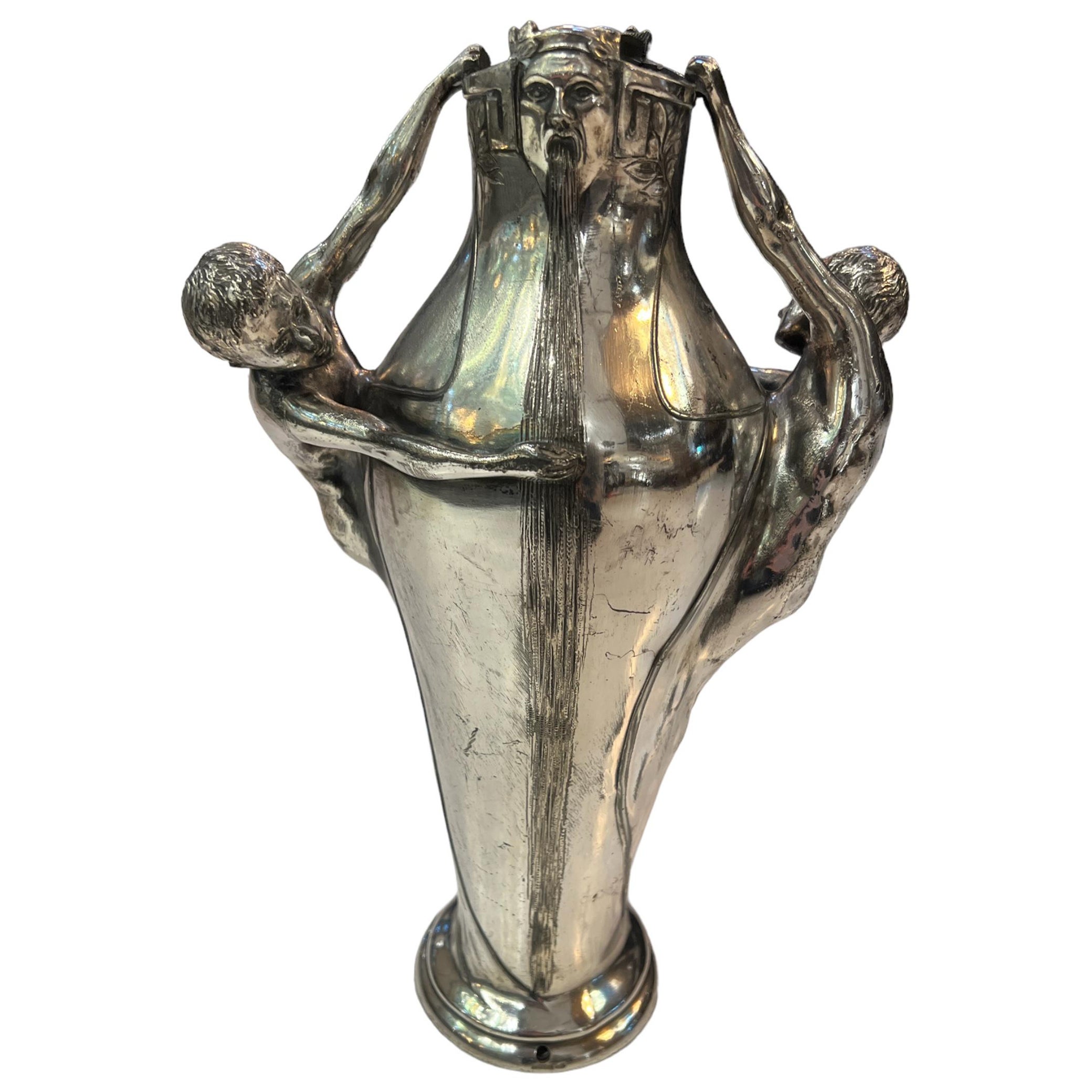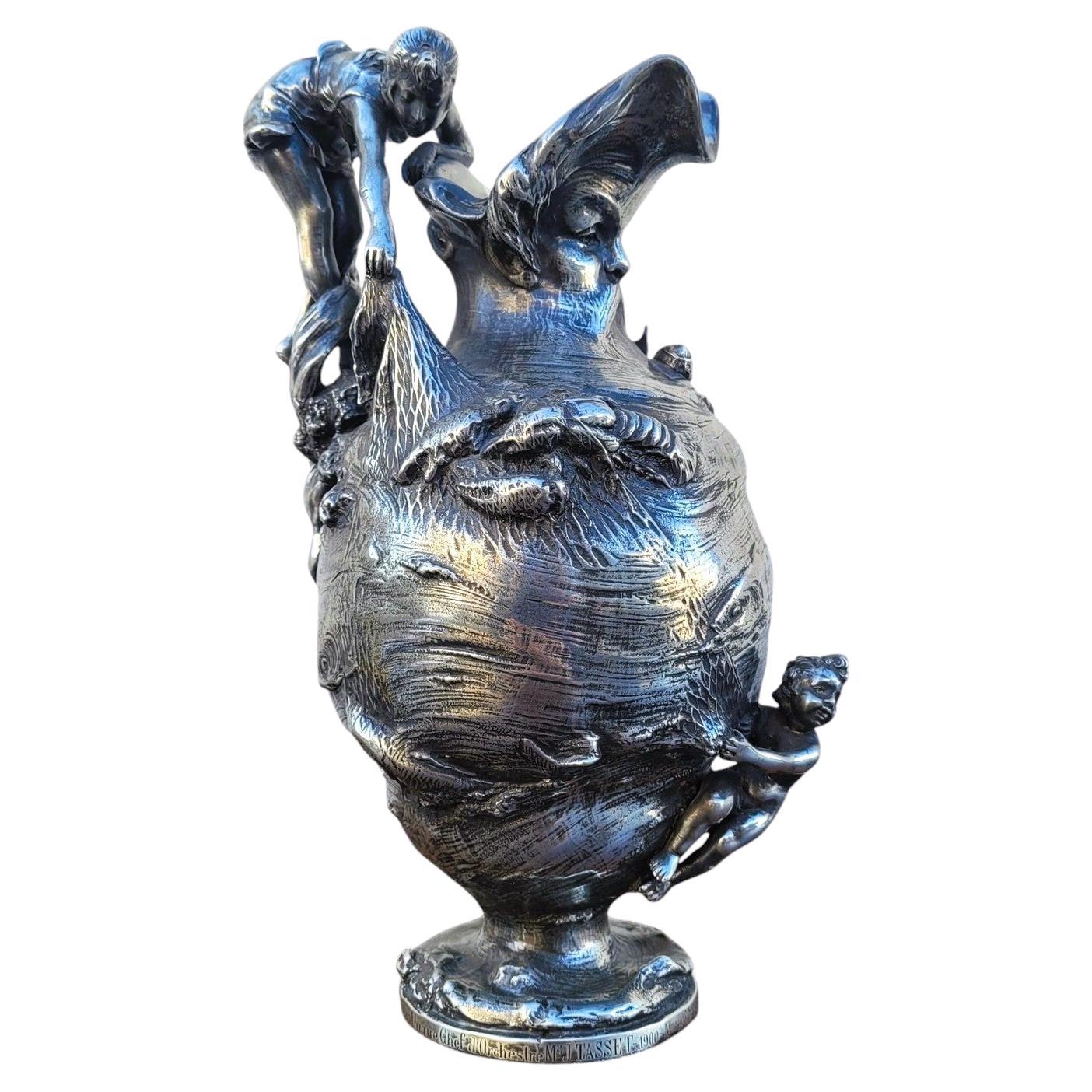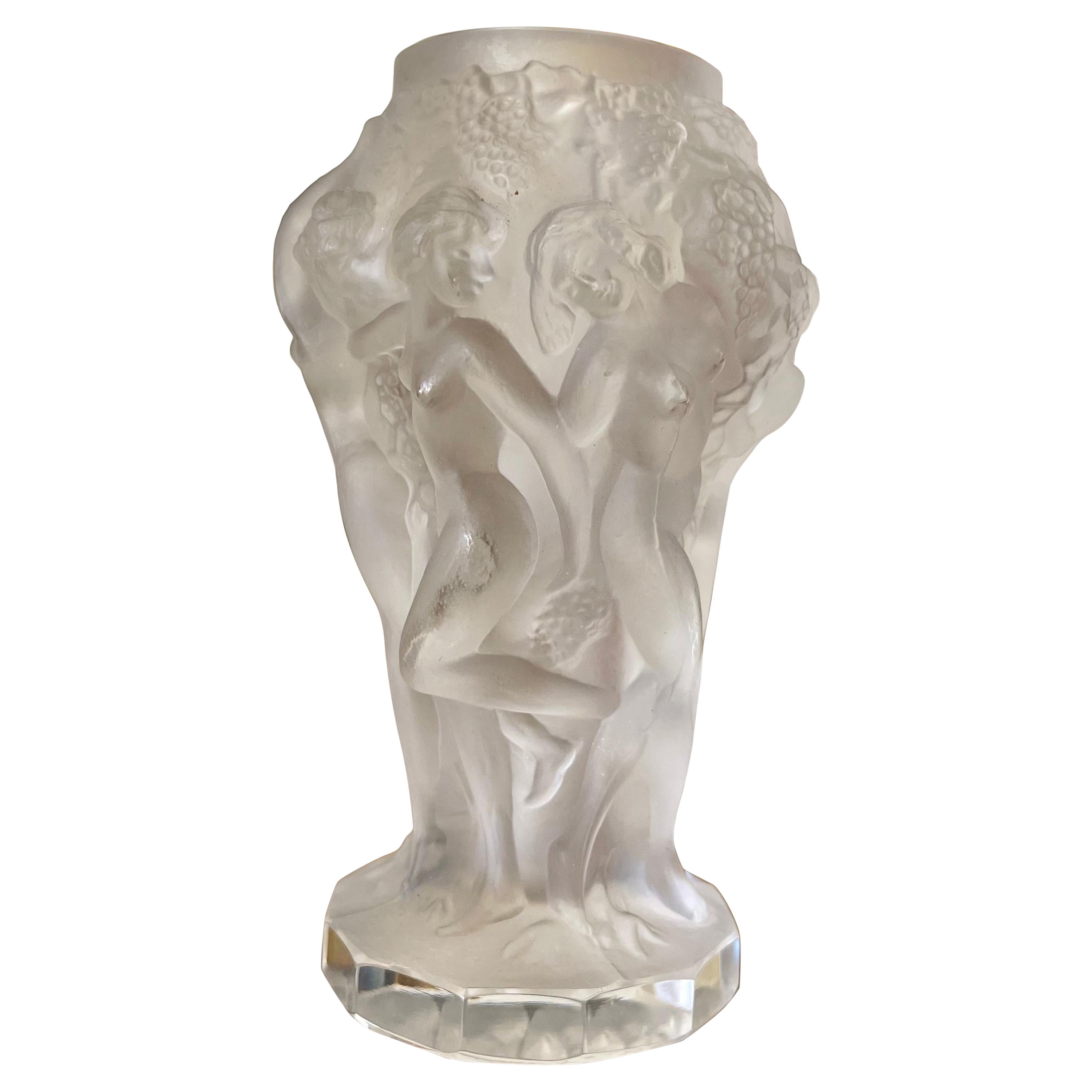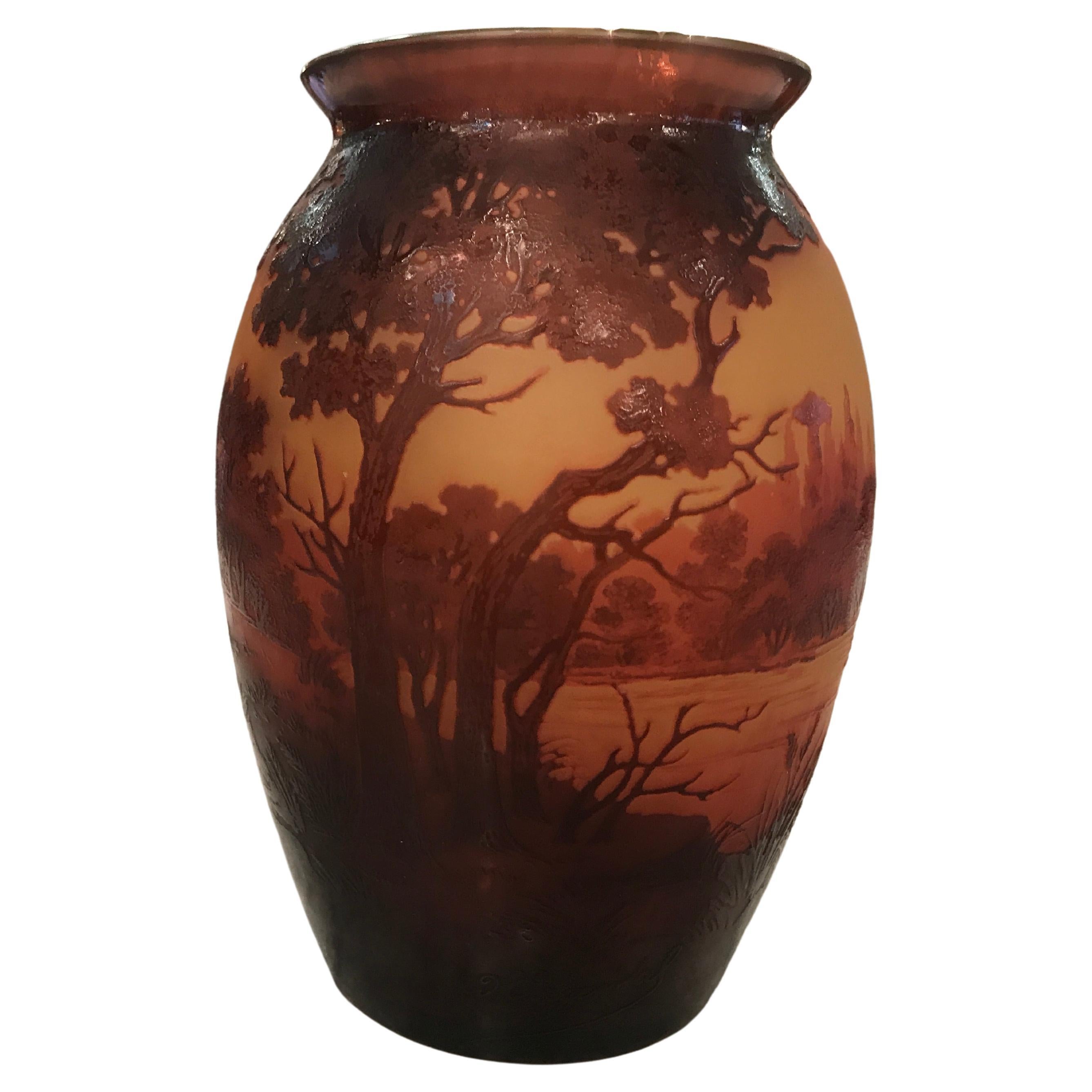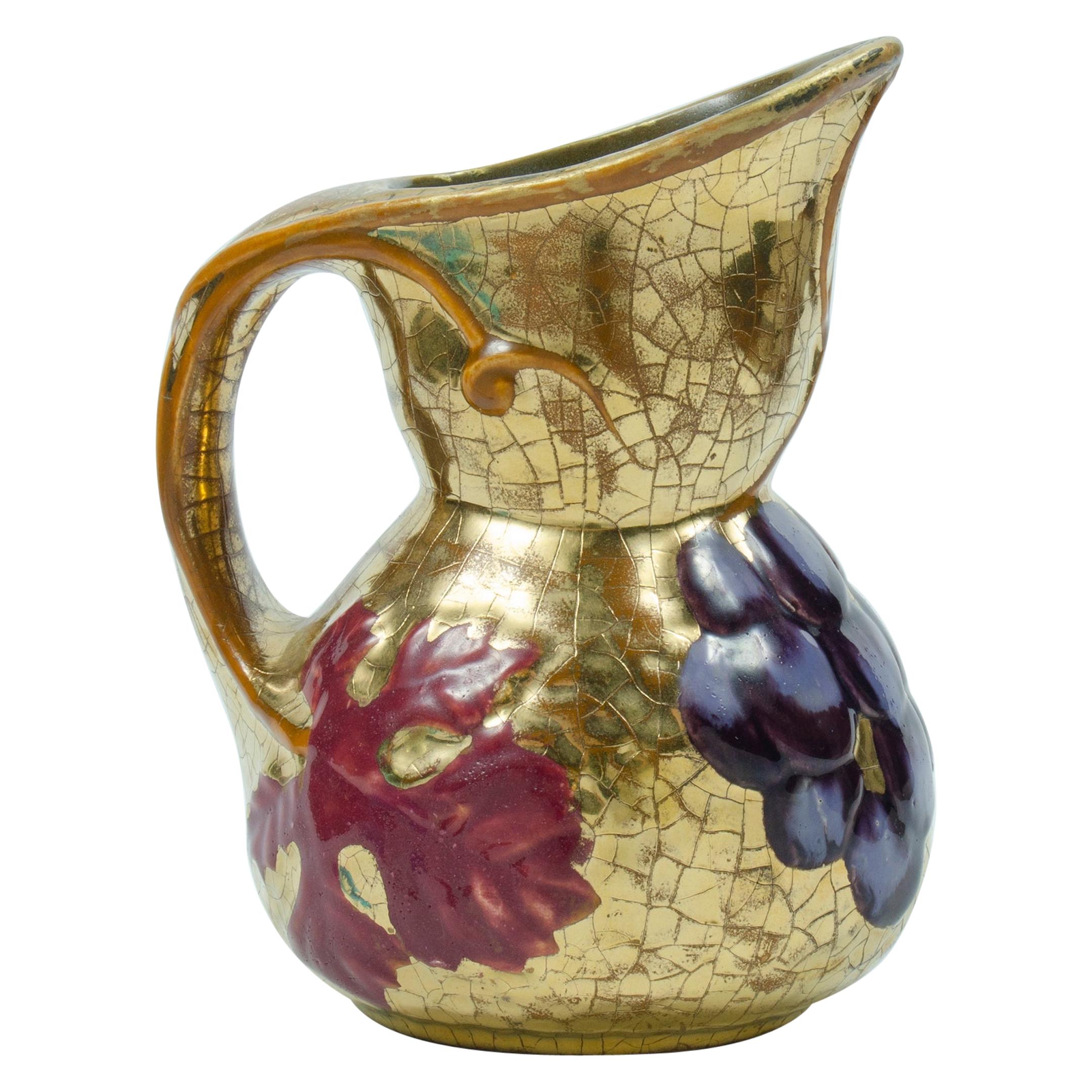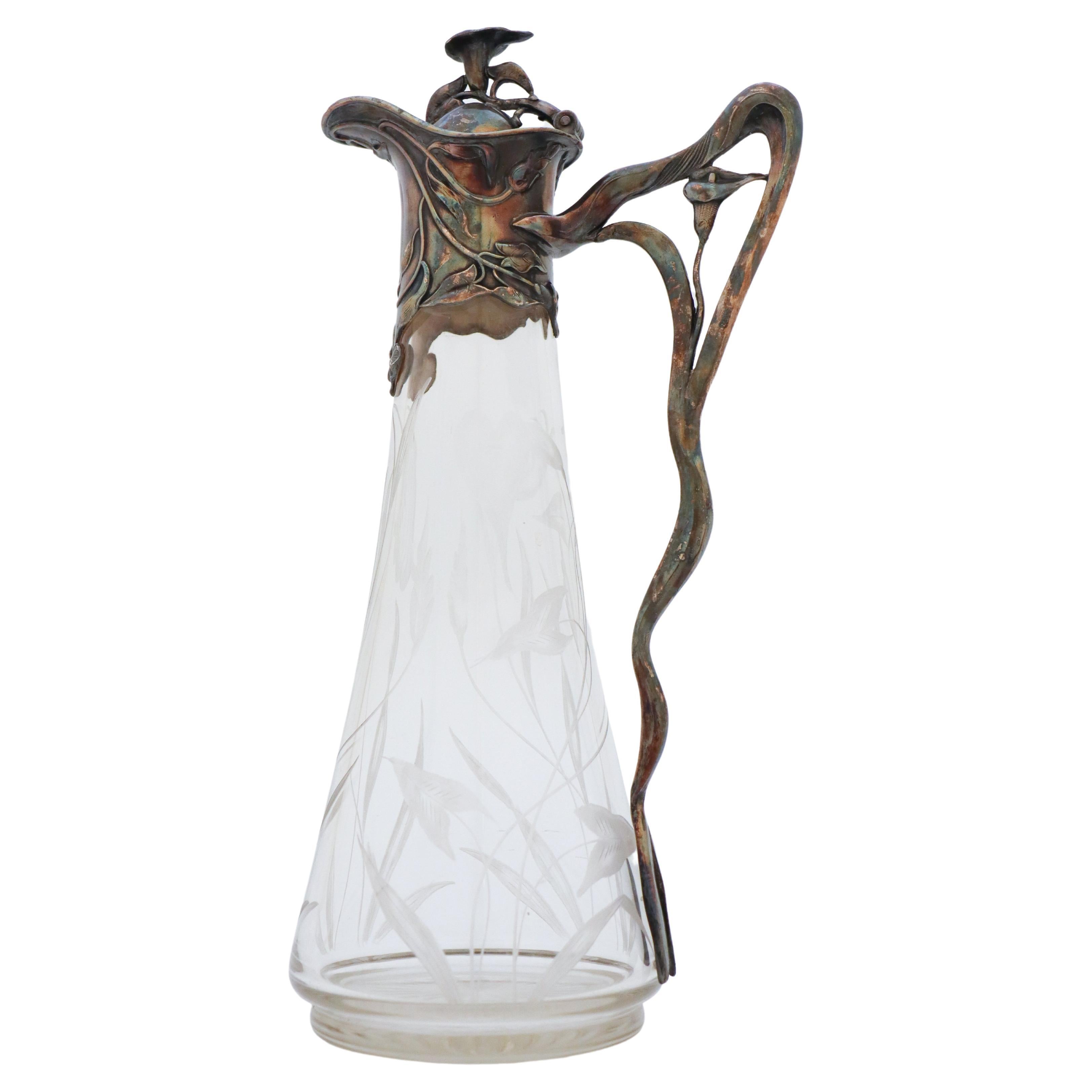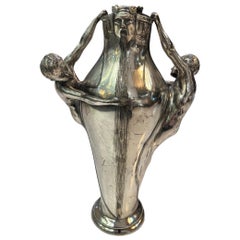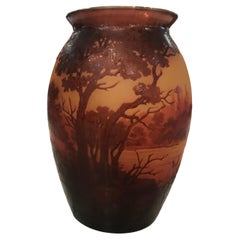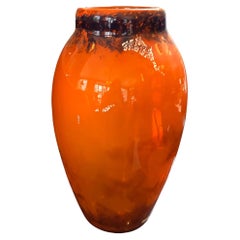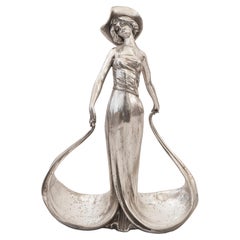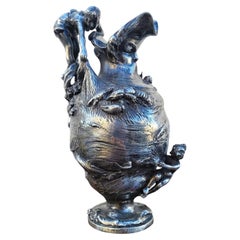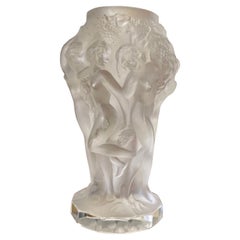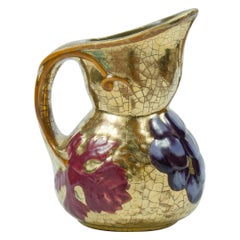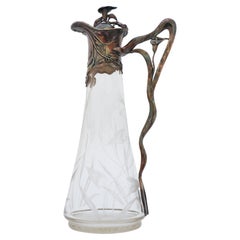Items Similar to Jar, Jugendstil, Art Nouveau, Liberty, Foundry: Eug. Blot Paris, Design: JOUANT
Video Loading
Want more images or videos?
Request additional images or videos from the seller
1 of 22
Jar, Jugendstil, Art Nouveau, Liberty, Foundry: Eug. Blot Paris, Design: JOUANT
$10,000
£7,577.17
€8,679.04
CA$14,163.87
A$15,456.07
CHF 8,106.97
MX$187,719.13
NOK 101,260.50
SEK 95,696.24
DKK 64,777.06
About the Item
Design: Jules Jouant (1863-1921)
Pitcher sign: Foundry: Eug. Blot Paris / Design: Jouant
Material: Silver plated
Biography
Auguste Jules Alphonse Jouant was born in Paris, Cité Fénelon, in the 9th arrondissement, on June 19, 18632, son of Étienne Alphonse Jouant, carpenter, and Louise Carré.
A student of the Ecole des Beaux-Arts in Paris3, Jules Jouant was one of Auguste Rodin's practitioners. He exhibited the Bust of Prince Gedroyc at the Salon of 1883 and sculpted busts of musicians such as Richard Wagner, Frédéric Chopin or Ludwig van Beethoven. He obtained an honorable mention at the Salon of 1913.
Jules Jouant is renowned for his works of art (vases, dishes, lamp bases, pitchers, candlesticks, table bells, trinket bowls, etc.) typical of the Art Nouveau style, produced in pewter by the Barbedienne founders This link leads to a disambiguation page, Eugène Blot and Ettlinger Frères. He also collaborates with the workshops of the Daum brothers This link returns
He was appointed professor at the Ecole Boulle in Paris.
He is buried in the Cimetière de Passy (2nd division).
Public collections
-Museum of Art and History of Belfort
seaweed, pewter
The Holly, pewter
-Mignard, marble bust, Paris, Manufacture des Gobelins7. Plaster model preserved in Angers in the Maine-et-Loire prefecture8
-Léo Delibes, marble bust, National Opera of Paris9. Plaster model preserved in the town hall of Rochefort (Charente-Maritime)
-Two bas-reliefs, stone, Paris, natural history museum
-Victim's head (1885), marble, Chalon-sur-Saône, Musée Vivant-Denon
We have specialized in the sale of Art Deco and Art Nouveau and Vintage styles since 1982. If you have any questions we are at your disposal.
Pushing the button that reads 'View All From Seller'. And you can see more objects to the style for sale.
Why are there so many antiques in Argentina?
In the 1880 – 1940 there was a grate wave of immigration encouraged by the periods of war that were taking place.
1st World War took place between 1914 and 1918
2nd World War took place between 1939 and 1945
The immigrants options were New York or Buenos Aires. Tickets were cheap and in Buenos Aires they were welcomed with open arms, as it was a country where everything was still to be done.
Argentina was the country of new opportunities, labour was needed and religious freedom was assured, in many cases the of the family travel first until they were settled and then the rest of the family members join them.
In the immigrant museum “Ellis Island Immigrant Building” in New York you can se the promotional posters of the boats that would take them to a new life.
Between the years 1895 and 1896, Argentina had the highest DGP (gross domestic product) per capita in the world according to the Maddison Historical Statistics index, this situation arose due to the large amount of food being exported to European countries, which were at war.
The Argentinean ships left the port of Buenos Aires with food, but they returned with furniture, clothes and construction elements, (it´s common to see this the old buildings of the historic neighbourhood of San Telmo, the beams with the inscription “Made in England)”, as well as many markets that were built in Buenos Aires, such us the San Telmo Market, whose structure was brought by ship and afterwards assembled in 900 Defensa Street.
With the great influence of European immigrants living in the country, the children of the upper classes travelled to study in France, resulting in the inauguration of “La Maison Argentinienne”, on 27th of June 1928, in the international city of Paris, which hosted many Argentinians that were studying in Frace.
It´s the fourth house to be built after France, Canada and Belgium, being the first Spanish-speaking one. Still in place today (17 Bd Jourdan, 75014, Paris, France). Many of the children of these wealthy families who attended international art exhibitions, museums and art courses abroad, took a keen interest in the European style. This is why Buenos Aires was at the time referred as “The Paris of South America”.
Between the years 1890 and 1920 more than a hundred Palaces were built on Alvear Avenue the most exclusive avenue in Buenos Aires. Today some of these palaces have been transformed into museums, hotels and embassies.
In the year 1936, the Kavanagh building was inaugurated, it was the tallest reinforced concrete building in South America.
During 1994 the American Society of Civil Engineers distinguished it as an “international engineering milestone”, and it´s now considered a World Heritage of Modern Architecture.
At the time was common to hire foreign architects such as Le Corbusier, who visited Buenos Aires/Argentina in 1929 and in 1948 he drew up the blueprints for a house built in La Plata City (which was declared a World Heritage Site).
In 1947, the Hungarian architect Marcelo Breuer designed “Parador Ariston” in the seaside city of Mar del Plata. After an Argentinean student at Harvard University convinced him to come to Argentina. He worked on an urban development project in the Casa Amarilla, area of La Boca.
The Ukrainian architect, Vladimiro Acosta, arrives in Argentina in 1928 and worked as an architect until que moved to Brazil.
Antonio Bonet, a Spanish architect who worked with Le Corbusier in Paris, arrives in Argentina in 1937, where he carried out several architectural works and in 1938 designs the well-known BFK chair.
Andres Kálnay, of Hungarian origin, made around 120 architectural masterpieces, among which the former Munich brewery stands out, he even made the furniture’s design.
The German architect, Walter Gropius, director of the Bauhaus, lived in Argentina, where he wrote articles for “Sur” magazine and founded in Buenos Aires, an architectural firm with Franz Möller, who was also an architect, where he built two houses.
At the same time several famous designers decided to immigrate to Argentina, among them we can find the well-known French designer, Jean-Michel Frank, who arrived in the country in 1940 and also worked for the Rockefeller family.
Special pieces were made, which were sold exclusively in the country, such as the well-known German company “WMF”, who sold their products by catalogue, which were chosen by the ladies of High Society in the list of wedding gifts, as well as the pieces designed by Christofle.
The Swiss sculptor Alberto Giacometti, made special pieces for Argentinean mansions.
In 1904 the first Jansen branch outside Paris was established in Buenos Aires, as the Argentinean clientele demanded a large amount of furniture, from the end of the 19th century to the mid-20th century.
In 1970, the brand Rigolleau Argentina made pieces authorised by Lalique.
The brands Maple and Thompson also set up shop in the country.
The French plastic artist, Marcel Duchamp moved to Argentina in 1918-1919.
Glass signed Gallé, Charder, Leverre, Schneider, Muller and other French firms. They were bought in flower shops and were given to ladies with beautiful floral arrangements.
Some furniture manufacturers travelled to international fairs and bough the patterns to produce the furniture in Argentina, such as the furniture firm Englander and Bonta, who bought the patterns ins Italy.
It is worth mentioning that in Argentina we have the largest Community of Italians outside of Italy, as it is estimated that 70 percent of the inhabitants have at least one Italian descendant, followed by Spanish immigrants.
The most Important furniture stores in Argentina:
Comte is founded in 1934 (under the direct management of Jean Michel Frank in 1940).
Nordiska (Swedish company established in 1934).
Churba in 1960, a company that brought foreign designers to present their furniture in the country:
Denmark: (Arne Jacobsen, Finn Juhl, Bender Madsen, Ejner Larsen, Poul Kjaerholm, Hans Wegner)
Sweden: (Hans Agne Jakobsson, Gustavsberg)
United States: (Herman Miller)
Finland: (Lisa Johansson, Folke Arstrom, Tapio Wirkkala, Alvar Aalto, Timo Sarpaneva)
Swedish Factory: (Orrefors)
Italy: (Littala, Vico Magistretti, Emma Gismondi, Gae Aulenti, Angelo Mangiarotti, Elio Martinelli, Gianna Celada, Angelo Mangiarotti, Mario Bellini, Carlo Scarpa)
Finland: (Olivia Toikka)
Plata Lappas (Lappas Silver): a goldsmith shop founded in 1887 in Argentina by Alcibiades Lappas of Greek origin.
In 2019, in Argentina took place “the Art Deco world congress”, in which we participated as hosts invited by Geo Darder, founder of the Copperbridge – Foundation, in which prominent people from all over the world attended to learn about Art Deco in Argentina.
Argentina currently has more than 100 Art Deco buildings and another 90 Art Nouveau buildings throughout the city of Buenos Aires.
Argentina is a country that has not been involved in many wars, which is why it has been a refuge for works of art and antiques from different periods of time, unlike European countries. That is way many collectors, museums and antique dealers from all over the world visit it, you should not miss the opportunity to visit this great country.
Laura Guevara Kjuder, architect.
.
- Dimensions:Height: 8.08 in (20.5 cm)Width: 3.94 in (10 cm)Depth: 3.55 in (9 cm)
- Style:Art Nouveau (Of the Period)
- Materials and Techniques:
- Place of Origin:
- Period:1900-1909
- Date of Manufacture:1900
- Condition:Wear consistent with age and use.
- Seller Location:Ciudad Autónoma Buenos Aires, AR
- Reference Number:Seller: M-1stDibs: LU6785235911972
About the Seller
5.0
Vetted Professional Seller
Every seller passes strict standards for authenticity and reliability
Established in 1982
1stDibs seller since 2022
40 sales on 1stDibs
Typical response time: <1 hour
- ShippingRetrieving quote...Shipping from: Ciudad Autónoma Buenos Aires, Argentina
- Return Policy
Authenticity Guarantee
In the unlikely event there’s an issue with an item’s authenticity, contact us within 1 year for a full refund. DetailsMoney-Back Guarantee
If your item is not as described, is damaged in transit, or does not arrive, contact us within 7 days for a full refund. Details24-Hour Cancellation
You have a 24-hour grace period in which to reconsider your purchase, with no questions asked.Vetted Professional Sellers
Our world-class sellers must adhere to strict standards for service and quality, maintaining the integrity of our listings.Price-Match Guarantee
If you find that a seller listed the same item for a lower price elsewhere, we’ll match it.Trusted Global Delivery
Our best-in-class carrier network provides specialized shipping options worldwide, including custom delivery.More From This Seller
View AllJar, Jugendstil, Art Nouveau, Liberty, 1900, Sign: Argentor
Located in Ciudad Autónoma Buenos Aires, C
Material: Silver plated
We have specialized in the sale of Art Deco and Art Nouveau and Vintage styles since 1982. If you have any questions we are at your disposal.
Pushing the butt...
Category
Antique Early 1900s Austrian Art Nouveau Pitchers
Materials
Metal
Vase D argental (French) - Style: Jugendstil, Art Nouveau, Liberty, DET
By D'argental
Located in Ciudad Autónoma Buenos Aires, C
Sign: D' Argental
D'Argental
St Louis, France – C. 1871 - 1918 Founded on the site of a glassworks in existence since 1586, and originally given the name Verrerie Royale de St Louis ...
Category
Antique Early 1900s French Art Nouveau Glass
Materials
Glass
Vase Muller Frères (Applications in silver), Jugendstil, Art Nouveau, Liberty
By Muller Frères
Located in Ciudad Autónoma Buenos Aires, C
Muller Feres
The heart of the company was formed by five brothers (Henri, Desire, Eugene, Pierre, Victor) from a glass making family who trained and worked at the Galle factory. Henr...
Category
Vintage 1920s French Art Nouveau Glass
Materials
Silver
Centerplace, France, Jugendstil, Art Nouveau, Liberty, 1900, Sign: L. Alliot
Located in Ciudad Autónoma Buenos Aires, C
Centerplace,
Year: 1900
Firms:
L. Alliot
We have specialized in the sale of Art Deco and Art Nouveau and Vintage styles since 1982. If you have any questions we are at your disp...
Category
Antique Early 1900s French Art Nouveau Centerpieces
Materials
Metal
Le Verre Francais ( Chardons plant ) Style: Art Nouveau, Jugendstil, Liberty
By Le Verre Francais
Located in Ciudad Autónoma Buenos Aires, C
Vase Le Verre Francais
acid worked
Page: 129 book Charles Schneider Le Verre Francais- Charder Schneider
Author: Marie Christine Joulin- Gerold Maier
Le Verre cameo glass was a sepa...
Category
Vintage 1920s French Art Nouveau Glass
Materials
Art Glass
Vase, Sign: Gallé, Style: Jugendstil, Art Nouveau, Liberty
By Gallé
Located in Ciudad Autónoma Buenos Aires, C
Sign: Galle
Gallé
World Famous for his innovative work in several areas of the decorative arts, including glass, furniture & ceramics, Emile Galle` (1846-1904) was born and died in t...
Category
Vintage 1920s French Art Nouveau Glass
Materials
Glass
You May Also Like
In The Style Of Kayserzinn, Pewter Ewer, Art Nouveau, Late 19th Early 20th Centu
By Kayserzinn 1
Located in MARSEILLE, FR
Large pewter ewer, on the theme of the sea: the catch represents a woman lifting a fishing net in which she has caught various fish and crustaceans.
Under the spout, a head of Neptu...
Category
Antique Late 19th Century Art Nouveau Pitchers
Materials
Pewter
Attr. to Heinrich Hoffman-Ingrid Vase, 20th Century
By Heinrich Hoffmann
Located in Beaune, FR
Small pressed and satin molded glass vase with relief decoration of a round of bacchantes with vine branches. The base is circular with canted sides. It is not signed and in very goo...
Category
20th Century European Art Nouveau Glass
Materials
Glass
Art Nouveau Vase Madeleine Lyee and Marcel Guillard
By Marcel Guillard
Located in Buenos Aires, Argentina
Art Nouveau vase Madeleine Lyee and marcel Guillard
perfect condition
golden color with grape motif
signed on its based
ceramic and enamel.
Art nouveau, modernist art or modernism wa...
Category
Vintage 1920s French Art Nouveau Ceramics
Materials
Enamel
Art Nouveau Decanter, Antique Pitcher, Floral Engraved Glass & Metal, Jugend
Located in Stockholm, SE
A decanter in Art Nouveau-style. Engraved floral decor on the glass and a lovely art nouveau shape on the metal. It is probably designed in Germany in the early 20th century. It is 3...
Category
Early 20th Century German Art Nouveau Pitchers
Materials
Metal
Art Nouveau vase by Auguste Moreau
By Auguste Moreau
Located in Belgrade, RS
This tall vase of baluster form is made of silver-plated pewter and it is the embodiment of the
charm, allure, and sophistication of the French Art Nouveau style. The vase is made an...
Category
Early 20th Century French Art Nouveau Vases
Materials
Silver Plate, Pewter
Exquisite French Art Nouveau Decanter / Pitcher by J. Barian Silver Glass 1900
Located in Ijzendijke, NL
Breathtaking French antique Art Nouveau decanter / pitcher in silver plate with enamel painted glass by Jules Barian 1900.
Exquisite Art Nouveau...
Category
Antique Early 1900s French Art Nouveau Pitchers
Materials
Silver Plate
More Ways To Browse
Stone Paris
Jar Paris
Antique Table Bell
Vivant Denon
Antique Pitcher Lamp
Frederic Chopin
Rodin Bust
Liberty Foundry
Tiffany And Co Sterling Silver Pitcher
Vintage Glass Tea Pitcher
19th Century Earthenware Pitchers
Ceramic Water Pitcher
Vintage Green Glass Jugs
Antique Enamel Jug
Antique Salt Glaze Jug
Antique Salt Glazed Jug
Antique Silver Pig
Staffordshire Jug
